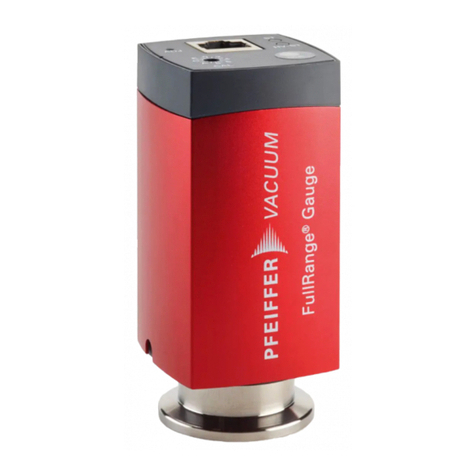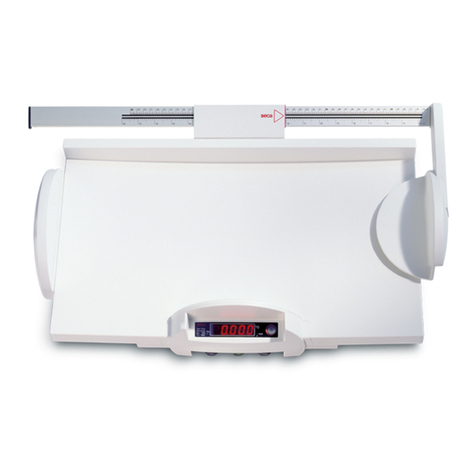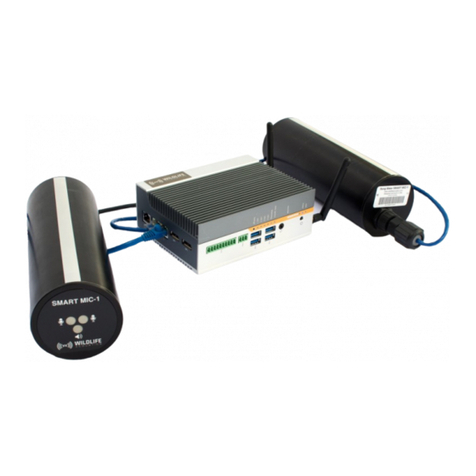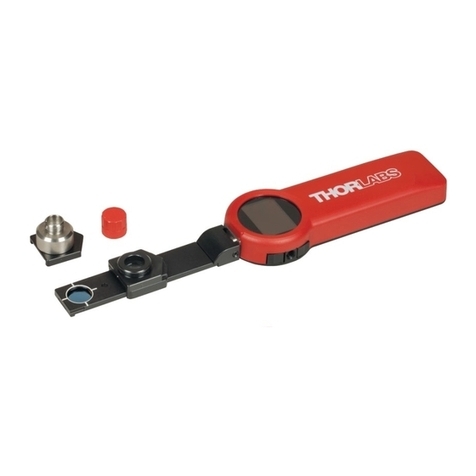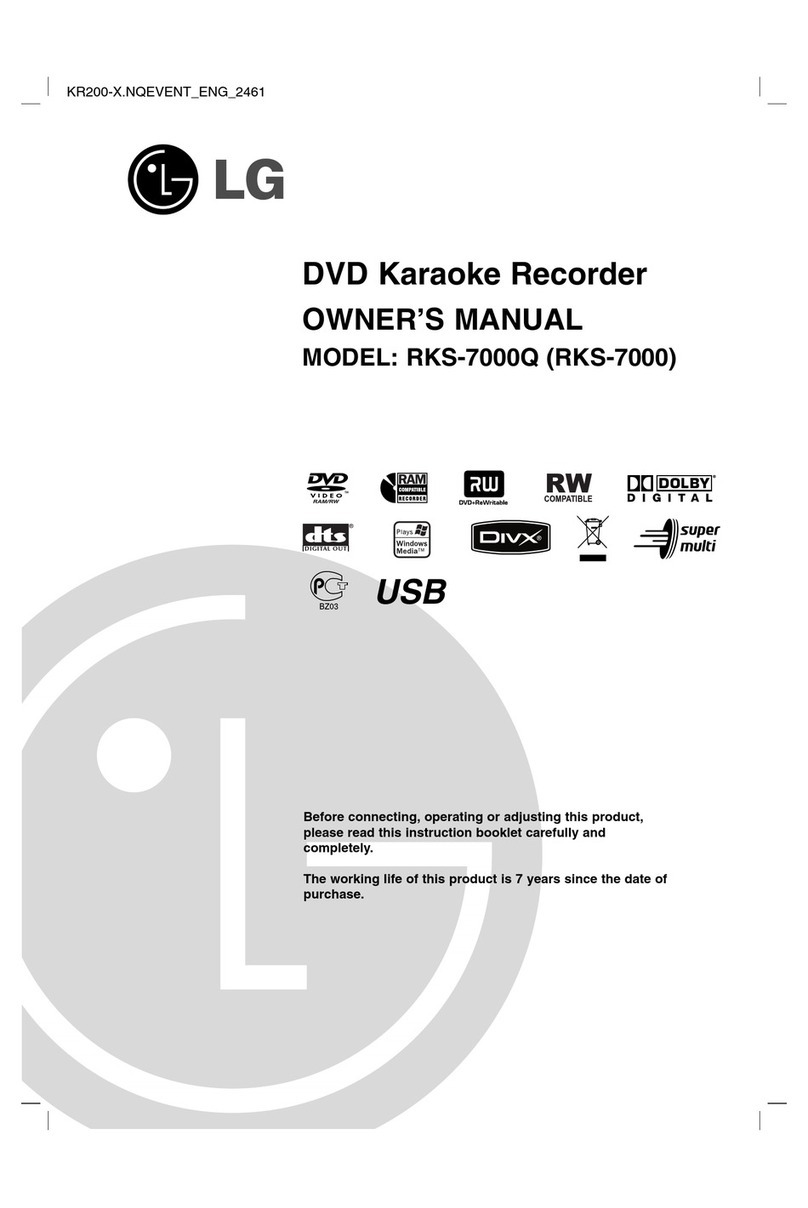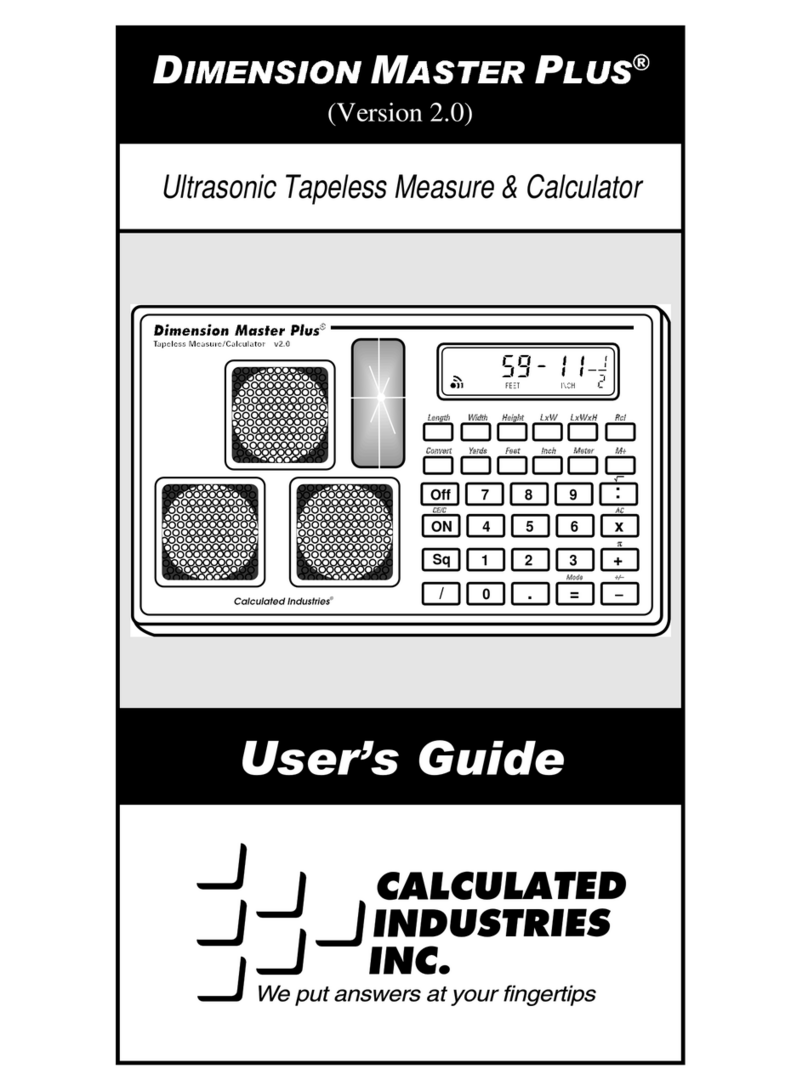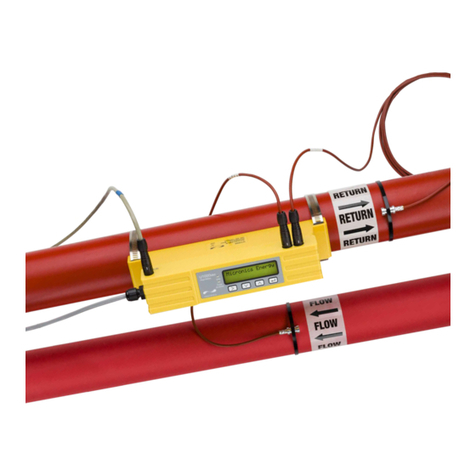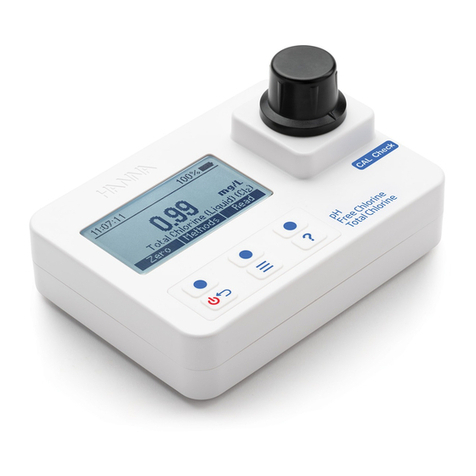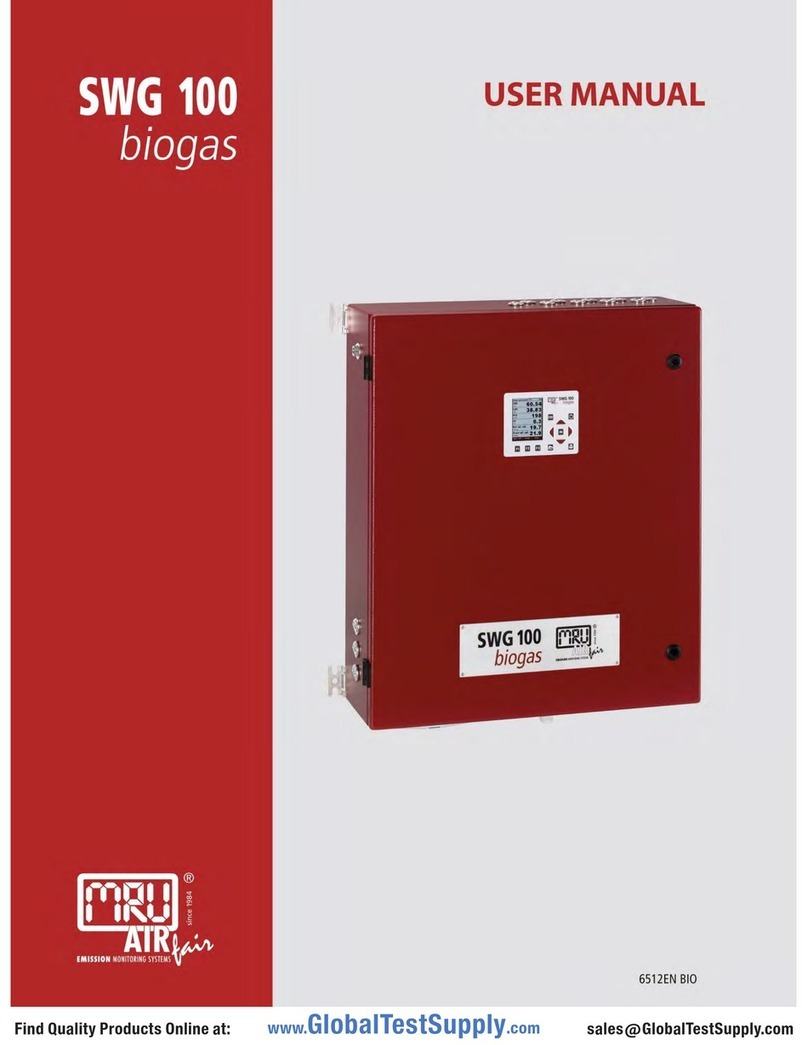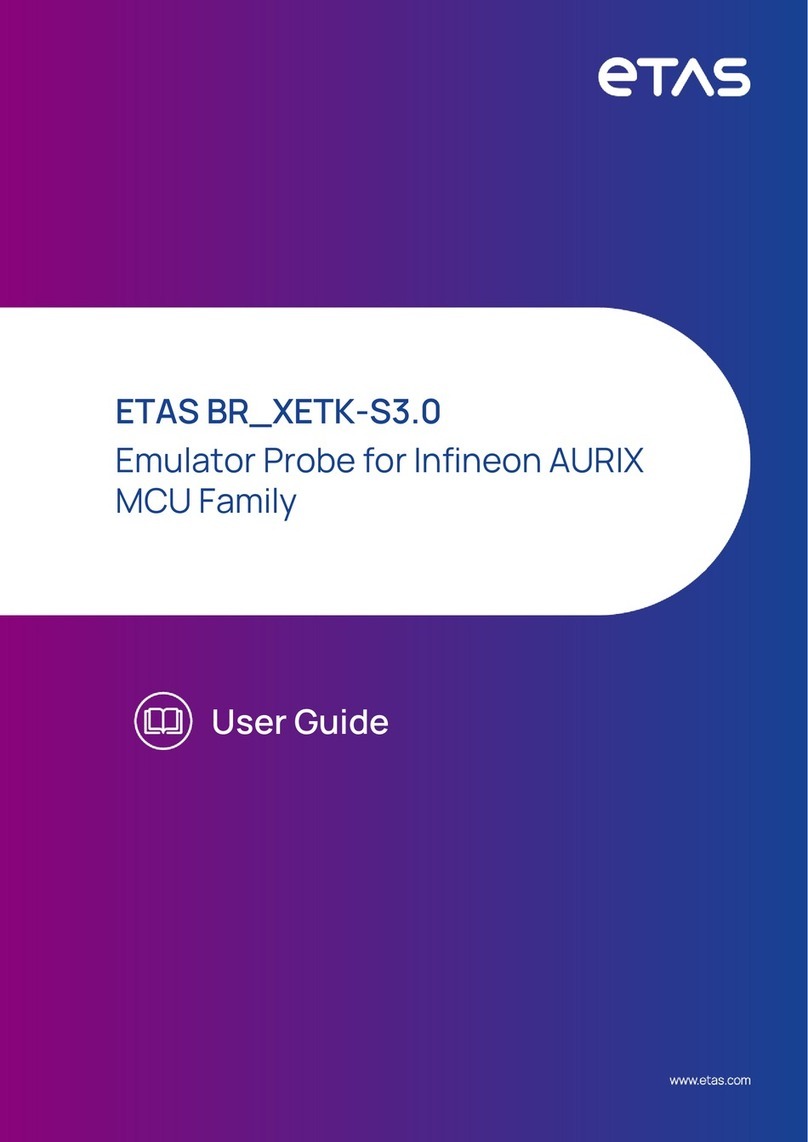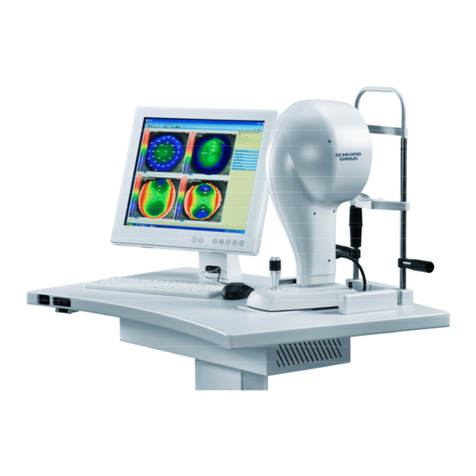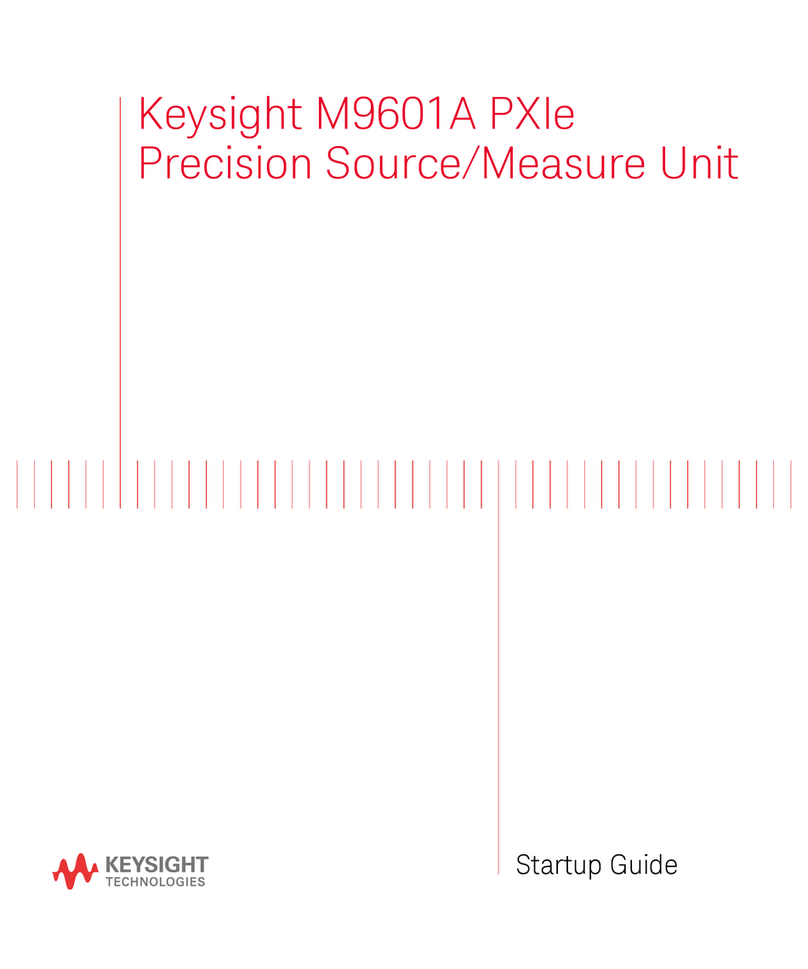MGL Avionics Vega EMS-1 User manual

Introduction
The Vega EMS-1 is a 2 1/4” (57mm) universal engine monitor color isplay instrument. The EMS-1 contains all the
necessary functionality to replace several engine monitoring instruments.
All information is isplaye in an easy to rea format on a high resolution wi e viewing angle 1.8” 1000c /m2 sunlight
rea able color isplay.
The EMS-1 light weight, small size an high level of functionality makes it an excellent choice for all types of engines. The
EMS-2 can also interface irectly to UL Power engines via the RS232 port.
The EMS-1 can also be interface via the CAN bus to an optional external RDAC unit (Remote Data Acquisition
Computer). This allows for easier installation as the RDAC unit is normally mounte in the engine compartment.
Vega EMS-1
Universal Engine Monitoring System
Operating Manual – English 1.0

Vega EMS-1 Operating Manual Page 2
1 Features
•Large 1.8” high resolution 160x128, sunlight readable, wide viewing angle, 1000 cd/m2 T T LCD display
• The engine display screen is automatically configured to optimize screen space depending on what
engine parameters have been selected
• Optional External RDAC (Remote Data Acquisition Computer) interfacing via the CAN bus
• Standard 2 1/4” (57mm) aircraft enclosure (can be front or rear mounted)
• Rotary control plus 2 independent buttons for easy menu navigation and user input
• An external output activates when a alarm condition has been reached
• Includes a RS232 serial output for interfacing to external equipment e.g dataloggers etc.
• Wide input supply voltage range of 8 to 30V DC
• 1 year limited warranty
EGT/CHT
• Can measure up to 4 thermocouple channels using the internal electronics or up to 12 thermocouple
channels using an optional external RDAC
• EGT/CHT Temperatures can be displayed in ºC or ºF from -100ºC to 1200ºC (-148ºF to 21 2ºF)
• High accuracy: Built in thermocouple linearization curves and cold junction compensation
• Includes an EGT/CHT trend graph display of each thermocouple channel
• Records maximum EGT/CHT temperature reached for each channel
• Includes an engine leaning feature
• Includes an engine cruise feature
• Special Rotax 12/ 14 engine monitor mode utilizing the standard built in Rotax NTC CHT probes
RPM
• Single or dual RPM measurement
• Includes a magneto check function
• RPM can be displayed in RPM or in percentage
• Records maximum RPM reached for each channel
Fuel Flow (Uses RPM 2 Input)
• Single fuel flow measurement
• Fuel flow can be displayed in L/hr or in G/hr
Fuel Level
• Analog inputs can be used to measure fuel level
• Fuel level can be displayed in Litres or Gallons
• Standard automotive fuel level senders can be used, even with odd shaped tanks due to a comprehensive,
multi-point calibration system
Analog Inputs
• Can measure up to 4 Analog channels
• Analog channels are universal and can be configured to measure Pressure, Temperature or Current
• Current measurement requires a MGL Avionics Closed Loop Current Sensor
• Pressure can be measured using standard automotive resistive senders (e.g. VDO 2, 5 and 10Bar), Rotax
4-20mA senders as well as voltage output pressure senders (e.g. UMA)
• Temperature can be measured using standard automotive resistive senders (e.g. VDO, Westach) as well
as the MGL Avionics precision LM335 semiconductor sensor
• Fuel level can be measured using standard automotive fuel level senders, even with odd shaped tanks
due to a comprehensive, multi-point calibration system
• High accuracy: Built in linearization curves for common senders
• Analog channels can be programmed to a user defined curve for custom senders
• Supports the Rotax 4-20mA pressure sender as used in the 12/ 14 engines
• Temperatures can be displayed in ºC or ºF
• Pressure can be displayed in psi or bar
• Fuel level can be displayed in Litres or Gallons
• Records minimum and maximum values reached for each channel

Vega EMS-1 Operating Manual Page 3
Manifold Pressure
• Manifold pressure can be displayed in millibar (mB) or in inches of Mercury (“Hg”).
• Records maximum MAP reached in permanent memory
• MGL Avionics RDAC-XF MAP required
Timers
• Displays both UTC (Zulu time) and local time
• Time is maintained by an internal lithium battery which can be replaced by the user
• Includes a settable Hobbs meter which is password protected
• Includes an engine running and flight timer
• Includes a programmable maintenance timer for scheduled routine engine maintenance
• Provides a 50 entry flight log that stores the start time and duration of each of the last 50 flights. The flight
timer can either be started automatically or by using a front push button
Volts
• Can measure voltages up to 30V (compatible with both 12V and 24V aircraft supplies)
• Contains a programmable low/high voltage alarm to automatically detect alternator failures and bad
batteries
• Records maximum and minimum Volts reached in permanent memory
Current (RDAC connection)
• Uses the MGL Avionics Closed Loop Current Sensor to measure the aircrafts current load.
• Records maximum and minimum current reached in permanent memory
UL Power ECU Display
• Displays engine information from the UL Power ECU (Engine Control Unit) via the RS232 port
• The EMS-1 has a dedicated UL Power ECU display screen
• Displays warning messages from the UL Power ECU
Rotax 12iS
• The EMS-1 can connect to the Rotax 12iS ECU directly or by using the MGL Avionics RDAC CAN 12iS
• Displays engine information from the Rotax 12iS ECU
• The EMS-1 has dedicated Rotax 12iS display screens
• Displays Engine, Sensor and Device Status messages from the Rotax i2iS ECU

Vega EMS-1 Operating Manual Page 4
2 Layout
3 Main Displays
The EMS-1 isplay screen is automatically configure to optimize screen space epen ing on which engine parameters
have been selecte . The Timers isplay, Tren graph an Max Values isplay can be selecte by rotating the rotary
control.
F2 / Down Button:
Menu System: Softkey button
Normal Display: Enable/ isable
Engine Leaning an Cruise mo e
Sunlight readable color
graphic display:
Backlight can be a juste in the
menu system
Rotary Control (Up/Down) & Enter Button:
Press the rotary control uring the normal isplay screens to access the menu system.
Rotate anti/clockwise for up/ own menu scrolling. Rotate the rotary control uring the
normal isplay mo e to view the Timers, Tren Graphs an the Max Values isplay.
F1 / Up Button:
Menu System: Softkey button
Normal Display: Start / Stop the
flight timer (Manual flight only)
2 1/4” enclosure.
Can be front or rear mounte
RPM / MAP / Volts / Fuel flow isplay section
Analog Channel section
(Pressure / Temperature /
Current / Volts / MAP/
Fuel Level)
EGT/CHT isplay section

Vega EMS-1 Operating Manual Page 5
RPM / MAP / Volts / Fuel Flow display section
The RPM / MAP / Volts isplay section will maximize the space accor ing to which parameters are enable .
Single RPM isplaye
Volts only isplaye
MAP only isplaye
Single RPM an Volts isplaye
Single RPM an MAP isplaye
Dual RPM isplaye , RPM 2 in percent
Single RPM an Fuel flow
Analog Channel section (Pressure / Temperature / Current / Volts / MAP / Fuel
Level)
The Analog channels isplay section will maximize the space accor ing to which parameters are enable . MAP an
Current can also be isplaye in a bargraph format. If more then 2 parameters are isplaye then the EMS-1 will alternate
the isplay at 2 secon intervals.
EGT/CHT display section
The Vega EMS-1 supports up to 4 thermocouples (using the internal electronics) an up to 12 thermocouples (using the
optional external RDAC). The EGT/CHT section will automatically try an maximize the isplay area accor ing to the
number of EGTs/CHTs selecte . The EGT/CHT parameters can be configure in the “EGT SETUP” an “CHT SETUP”
menu.
The EGT/CHT number will highlight to the in icate the temperature value if “HIGHEST” is selecte . The EGT highlight
color is magenta, an the CHT color is cyan.
High Caution
High Alarm
Maximum temperature
reache in icator
Temperature unit
In icates highest value if
“HIGHEST” is selecte or
the highlighte bar value
if “SCANNING” is selecte
EGT group in icator
CHT group in icator

Vega EMS-1 Operating Manual Page 6
3.1 Timers display
LOCAL:
Local time normally inclu es an offset from UTC time. The time offset can be setup in the “TIMERS SETUP” menu.
UTC:
This is also know as Zulu or GMT time. The UTC time can be set in the “TIMERS SETUP” menu.
FLIGHT:
The flight time is automatically reset to zero when a new flight is starte (manual or automatic flight etection). The “:” will
flash when a flight is active. The flight timer can be starte pressing the F1/UP key (Manual flight mo e).
HOBBS:
The Vega EMS-1 contains a passwor protecte Hobbs timer. The Hobbs time can be set to the current known engine
time in the “TIMERS SETUP” menu. The Hobbs timer will only increment when the RPM is greater then the “HOBBS
RPM”.
MAINT: (Maintenance Timer)
This timer is set in engine hours an it will count own to zero when the engine RPM is greater then the “HOBBS RPM”
value as set in the “TIMERS SETUP”. A goo use for this function is to set the hours until your next spark plug change or
engine inspection.
The purpose of this function is to assist you in etermining remaining hours until maintenance will be require . It is not
inten e as a replacement for the aircraft's maintenance log. It is therefore important that the aircraft's maintenance log
be maintaine in the normal manner. You shoul further use your own iscretion in performing maintenance earlier than
in icate shoul any aircraft performance problems arise.
A maximum of 999 hours can be entere as a maintenance interval. A remin er
message will appear on startup when zero hours are remaining. The remin er message
will isappear after the pilot presses any key. Engine running time for the purpose of the
mainteance timer is efine as the run time where the engine RPM is greater than the
“HOBBS RPM” value as set in the “TIMERS SETUP”.

Vega EMS-1 Operating Manual Page 7
3.2 EGT/CHT Trend Graph display
This isplay can be accesse by rotating the rotary control uring the normal isplay mo e. The tren graph isplays the
last 160 secon s of EGT/CHT temperature rea ings.
3.3 Maximum Values display
This isplay can be accesse by rotating the rotary control uring the normal isplay
mo e. Press the F1/Up button when the max values isplay is showing to reset the
maximum values.
3.4 Engine leaning mode
EGT information is also very useful for fuel mixture control. As the fuel mixture is leane ,
so the exhaust gasses get hotter. This rise in temperature is a sign of increase
combustion efficiency as the optimum mixture setting is approache . If the leaning
progresses past a certain point however, the temperature will begin to rop. This
temperature rop is the result of re uce energy output from the iminishe fuel flow.
The best operating mixture for aircraft engines is in the vicinity of this peak EGT rea ing.
The EMS-1 has a special Leaning mo e, which easily i entifies the peak EGT con ition
allowing you to a just your fuel mixture for best performance.
Fuel mixture shoul be a juste once you have eci e on a suitable cruise power
setting (typically 70%). Press the F1/Up button on the main isplay to enable the engine
leaning mo e. The "LEAN" label is isplaye at the top of the main isplay to clearly
ifferentiate it from the normal operating mo e.
As the fuel mixture is slowly leane past the point at which the temperature begins to
rop (by more than 10°C/15°F), the absolute EGT temperatures will change to show the
EGT rea ing relative to this peak. The sequential or er as each cylin er peaks is also
shown.
Leaning mo e can be cancele by pressing the F1/Up button again.
Note: The maximum values are stored in non-volatile
memory and are recalled on power-up.

Vega EMS-1 Operating Manual Page 8
3.5 Engine cruise mode
Once in the cruise, press the F2/Down button to enable the Cruise Mo e. The
"CRUISE" label is isplaye at the top of the main isplay to clearly ifferentiate it
from the normal operating mo e. All EGT an CHT rea ings are imme iately
sample as reference temperatures for the cruise.
The isplay then shows EGT an CHT values relative to this reference temperature.
Cruise mo e can be cancele by pressing the F2/Down button again.
3.6 Magneto check function
Press the F2/Down button once you have reache your normal run-up RPM. The isplay
will show the RPM eviation from when the magneto function was activate . Any
RPM rops will be isplaye as a negative RPM value, a positive rea ing in icates an
increase in RPM.
Switch the mag to left or right. The EMS-1 shoul isplay a negative ( rop in) RPM.
Then switch the mags to “Both”. The EMS-1 rea ing shoul go back to zero or near
zero. A problem shoul show up as an excessive rop in one mag an the return to
zero or close to zero incorrectly.
The EMS-1 will return to the normal isplay after 60 secon s or if any key is presse .
3.7 Start / Stop flight display
Press the F1/Up button uring the normal isplay mo e
to manually start/stop a flight. This key is only active if
the EMS-1 is setup to select the manual flight option
un er the “TIMERS” setup menu.

Vega EMS-1 Operating Manual Page
4 Menu System
Press the rotary control button uring the normal isplay mo e to enter the menu system. Use the rotary control to
navigate through the menu system.

Vega EMS-1 Operating Manual Page 10
4.1 Exiting the menu system
Press the F1/Up button to exit the menu system when the “EXIT” soft key is shown. All changes ma e uring navigation
of the menu system will be save in non-volatile memory upon exiting. The instrument will not save any changes if you
remove power before exiting the menu system.
4.2 Flight Timer
View Flight Log:
Use the rotary control to view the next flight log entry.
Erase Flight Log:
Use this function to erase the flight log store in the EMS-1.
FLIGHT:
Select whether you want the EMS-1 to automatically etect a flight or whether the pilot must press the F1/Up button to
start/stop a flight. We recommen you select automatic flight etection either on RPM1 or RPM2.
T/O RPM:
This menu option is only shown if the “RPM1” or "RPM2" flight mo e is selecte . Enter the RPM take off threshol that
you want the flight timer to start incrementing.

Vega EMS-1 Operating Manual Page 11
4.3 RPM 1 Setup menu option
Display:
Select if you want the RPM to be isplaye in “RPM”, “PERCENT” or “OFF”.
RPM 100 :
Select the maximum value that you want the RPM to correlate to 100%. This is only shown if “Percent” is selecte for
isplay.
Display Max:
Select the maximum RPM that you want the RPM ial to show. This can give you increase isplay resolution.
Display Min:
Select the minimum RPM that you want the RPM ial to show. This can give you increase isplay resolution.
High Alarm:
This enables or isables the RPM high alarm.
High Alarm:
Enter the RPM threshol for when the high alarm must be activate . Any RPM value above this value will activate the
alarm.
High Caution:
Enter the RPM value for the high caution. This is the lower value of the upper yellow ban .
Low Caution:
Enter the RPM value for the low caution. This is the upper value of the lower yellow ban .

Vega EMS-1 Operating Manual Page 12
Low Alarm:
This enables or isables the RPM low alarm.
Low Alarm:
Enter the RPM threshol for when the low alarm must be activate . Any RPM value below this value will activate the
alarm.
Pulses/Rev:
Enter the number of pulses per RPM. For engines with an uneven number of cylin ers like three cylin er four stroke
engines you can enter values containing fractions (usually 1.5 in this example). Most four stroke engines woul generate
one pulse for every two revolutions per cylin er. A four cylin er automotive four stroke engine woul thus generate 2
pulses per revolution. A typical Rotax DCDI two stroke engine woul generate 6 pulses per revolution. The well known
Rotax 912/914 engine generates one pulse per revolution.
Increment:
Select the step size between successive RPM values eg. if the RPM value is 4003 RPM an the “RPM INCREMENT” is 5
then the actual value shown is 4005 RPM.
Label:
Enter a label to suit your channel so you can i entify it easily.
Data:
Select the ata source of the RPM signals. Options inclu e internal (using the internal electronics within the EMS-1) or
from an optional external RDAC unit.
RDAC Address:
Select the CAN a ress of the RDAC unit.

Vega EMS-1 Operating Manual Page 13
4.4 RPM 2 / Fuel Flow Setup menu option
The RPM-2 input can be use for RPM or fuel flow.
If RPM is selected for “MODE”
Mode:
Select if you want to isplay “RPM2” or “FUEL FLOW” or “OFF”
Display:
Select if you want the RPM to be isplaye in “RPM”, “PERCENT” or “OFF”.
RPM 100 :
Select the maximum value that you want the RPM to correlate to 100%. This is only shown if “Percent” is selecte for
isplay.
Display Max:
Select the maximum RPM that you want the RPM ial to show. This can give you increase isplay resolution.
Display Min:
Select the minimum RPM that you want the RPM ial to show. This can give you increase isplay resolution.
High Alarm:
This enables or isables the RPM high alarm.
High Alarm:
Enter the RPM threshol for when the high alarm must be activate . Any RPM value above this value will activate the
alarm.

Vega EMS-1 Operating Manual Page 14
High Caution:
Enter the RPM value for the high caution. This is the lower value of the upper yellow ban .
Low Caution:
Enter the RPM value for the low caution. This is the upper value of the lower yellow ban .
Low Alarm:
This enables or isables the RPM low alarm.
Low Alarm:
Enter the RPM threshol for when the low alarm must be activate . Any RPM value below this value will activate the
alarm.
Pulses/Rev:
Enter the number of pulses per RPM. For engines with an uneven number of cylin ers like three cylin er four stroke
engines you can enter values containing fractions (usually 1.5 in this example). Most four stroke engines woul generate
one pulse for every two revolutions per cylin er. A four cylin er automotive four stroke engine woul thus generate 2
pulses per revolution. A typical Rotax DCDI two stroke engine woul generate 6 pulses per revolution. The well known
Rotax 912/914 engine generates one pulse per revolution.
Increment:
Select the step size between successive RPM values eg. if the RPM value is 4003 RPM an the “RPM INCREMENT” is 5
then the actual value shown is 4005 RPM.
Label:
Enter a label to suit your channel so you can i entify it easily.
Data:
Select the ata source of the RPM signals. Options inclu e internal (using the internal electronics within the EMS-1) or
from an optional external RDAC unit.
RDAC Address:
Select the CAN a ress of the RDAC unit.
If Fuel Flow is selected for “MODE”
Mode:
Select if you want to isplay “RPM2” or “FUEL FLOW” or “OFF”
Unit:
Select if you want fuel flow isplaye in L/Hr or G/Hr

Vega EMS-1 Operating Manual Page 15
Label:
Enter a label to suit your fuel flow input so you can i entify it easily.
K-Factor:
The K-Factor is the number of pulses generate by the fuel flow sen er for one Litre of fuel. The ual range fuel flow
sen er supplie by MGL Avionics has a K-Factor of 7000 in the low flow mo e (jet installe ) an 1330 for the high flow
mo e (no jet installe ). You can use the K-Factor to calibrate your fuel flow sen er. See the installation section for more
etails on how to calibrate an install the fuel flow sen er.
Mode:
Select if you want to measure fuel flow using a fuel flow sen er or by using fuel injectors.
Injector:
Select whether the EMS-1 fuel flow input is connecte to the high or low si e fire fuel injector.
Data:
Select the ata source of the RPM signals. Options inclu e internal (using the internal electronics within the EMS-1) or
from an optional external RDAC unit.
RDAC Address:
Select the CAN a ress of the RDAC unit.

Vega EMS-1 Operating Manual Page 16
4.5 EGT / CHT Setup (Thermocouple Setup)
EGT / CHT Channels:
Select the number of EGT or CHT channels you want to use. Choices are from 1 to 4 (1 to 12 if using the optional
RDAC) . The temperature isplay will configure itself to make best possible use of the available isplay size. Please note
that the minimum number of EGT & CHT channels that can be isplaye is 1 an the maximum number of EGT an CHT
channels that can be isplaye is 4 (12 if using the optional RDAC).
Display:
A selection between “HIGHEST” or “SCANNING” can be selecte . If “HIGHEST“ is selecte then the current highest
thermocouple temperature is isplaye . If “SCANNING” is selecte then the unit will cycle through each thermocouple at
a one secon interval.
Display Max:
Select the maximum temperature that you want the EGT/CHT bargraph to show. This can give you increase isplay
resolution.
Display Min:
Select the minimum temperature that you want the EGT/CHT bargraph to show. This can give you increase isplay
resolution.
High Alarm:
This enables or isables the EGT/CHT high alarm.
High Alarm:
Enter the temperature threshol for when the high alarm must be activate . Any temperature above this value will activate
the alarm.

Vega EMS-1 Operating Manual Page 17
High Caution:
Enter the temperature value for the high caution.
Probe:
Select if you are using a K-type, J-type or E-type thermocouple probe for this channel. All probes supplie by MGL
Avionics are K-Type. J-types are sometimes use with American ma e CHT probes. All EGT probes are K-type. E-type
probes are sel om use .
Temp Unit:
Select whether you want the temperature to be isplaye in egrees Celsius (ºC) or egrees Fahrenheit (ºF).
Data:
Select the ata source of the themocouples. Options inclu e internal (using the internal thermocouple amplifier an Vega
connector) or from an optional external RDAC unit.
RDAC Address:
Select the CAN a ress of the external RDAC unit.
4.5.1 Special Rotax 12/ 14 probe mode
In this mo e the Analog Channel 3 an Analog Channel 4 (or RDAC AUX 1 an AUX 2 analog input channels) become
the Rotax CHT channel 1 an CHT channel 2 respectively. All CHT setups must still be one un er the “CHT SETUP”
menu.

Vega EMS-1 Operating Manual Page 18
4.6 Analog CH1 to CH4 Setup
The 4 analog channels are universal analog input channels that can be use for pressure, temperature or current.
Only “CHANNEL 1” Setup is shown below, follow the same steps for Channel 2, 3 & 4
4.6.1 Pressure Setup
Mode:
Select the function for the analog channel. Options are “PRESSURE”, “TEMP”, “CURRENT” or “OFF”.
Type:
Select if you are using a resistive, voltage or current pressure sen er.
If the “RESISTIVE” pressure sender is selected
Sender:
Select what type of resistive pressure sen er you are using. Select “V O” for VDO / resistive sen ers, “USER” for a
custom sen er.
Model:
Select which VDO pressure sen er you are using. A selection between a VDO 2, 5 or 10 Bar can be selecte .

Vega EMS-1 Operating Manual Page 1
If the “VOLTAGE” pressure sender is selected
Sender:
Select the type of voltage sen er you are using. Select “UMA” for UMA sen ers, "0.5-4.5V" for voltage sen ers, or
“USER” for a custom voltage sen er.
Model:
For UMA sen ers select the UMA mo el number.
If the “CURRENT” pressure sender is selected
Sender:
Select the type of current sen er you are using. Select “4-20mA” for Rotax 912/914 4-20mA sen er or “USER” for a
custom 4-20mA sen er.
Pressure @ 4mA:
Enter the pressure specifie at 4mA output.
Pressure @ 20mA:
Enter the pressure specifie at 20mA output.
Menu options for all sender types
If the “USER" pressure sender is selected
Calibrate Sender:
If the sen er type is set to “USER”, then use this menu option to calibrate your pressure sen er. See section 4.2.3 for
more information.
Label:
Enter a label to suit your pressure channel so you can i entify it easily.
Unit:
Select whether you want to isplay the pressure in Bar, psi or psi(0.1). The psi(0.1) is for low range pressure sen ers e.g.
UMA 7PSI.
Display Max:
Select the maximum pressure that you want the bargraph to show. This can give you increase isplay resolution.
Display Max:
Select the minimum pressure that you want the bargraph to show. This can give you increase isplay resolution.
High Alarm:
This enables or isables the pressure high alarm.
High Alarm:
Enter the pressure threshol for when the high alarm must be activate . Any pressure above this value will activate the
alarm.
High Caution:
Enter the pressure value for the high caution. This is the lower value of the upper yellow ban .

Vega EMS-1 Operating Manual Page 20
Low Caution:
Enter the pressure value for the low caution. This is the upper value of the lower yellow ban .
Low Alarm:
This enables or isables the pressure low alarm.
Low Alarm:
Enter the pressure threshol for when the low alarm must be activate . Any pressure below this value will activate the
alarm.
Data:
Select the ata source of the pressure signal. Options inclu e internal (using one of the analog channels within the EMS-
1) or from an optional external RDAC unit.
RDAC Address:
Select the CAN a ress of the RDAC unit.
4.6.2 Temperature Setup
Mode:
Select the function for the analog channel. Options are “PRESSURE”, “TEMP”, “CURRENT” or “OFF”.
Sender:
Select what type of sen er you are using. Select “V O 120” for a VDO 120 egree NTC sen er, Select “V O 150” for a
VDO 150 egree NTC sen er, “WESTACH” for Westach 339 NTC sen er, “MGL” for a MGL NTC sen er, “LM335” for a
MGL precision temperature sen er or “USER” for a custom sen er.
If the sender type is set to “USER"
CALIBRATE SENDER:
If the sen er type is set to “USER”, then use this menu option to calibrate your pressure sen er. See section 4.2.3 for
more information.
Table of contents
Other MGL Avionics Measuring Instrument manuals
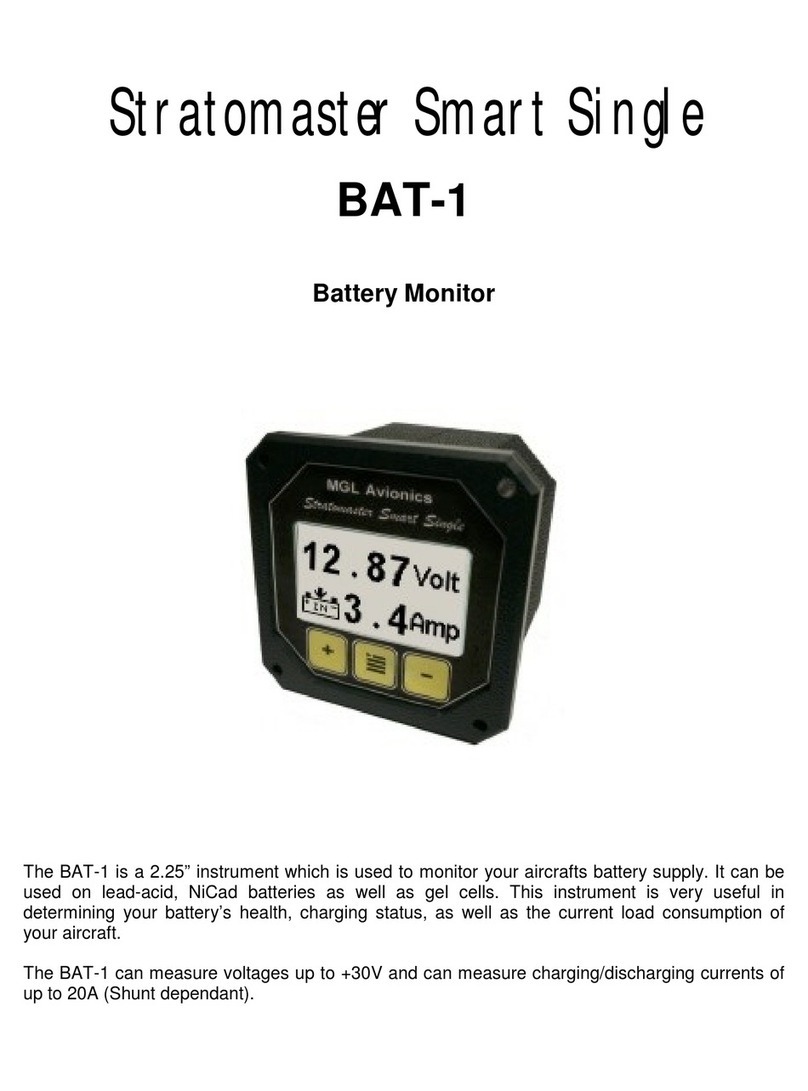
MGL Avionics
MGL Avionics BAT-1 User manual
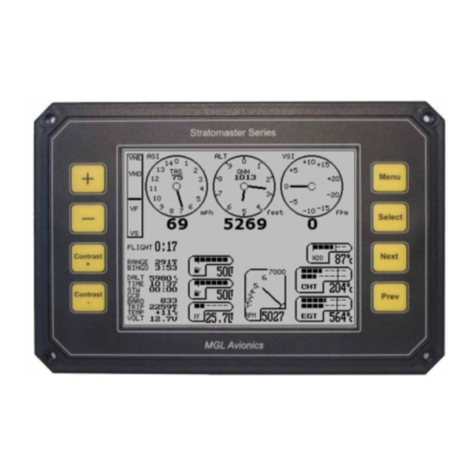
MGL Avionics
MGL Avionics Ultra Horizon XL User manual
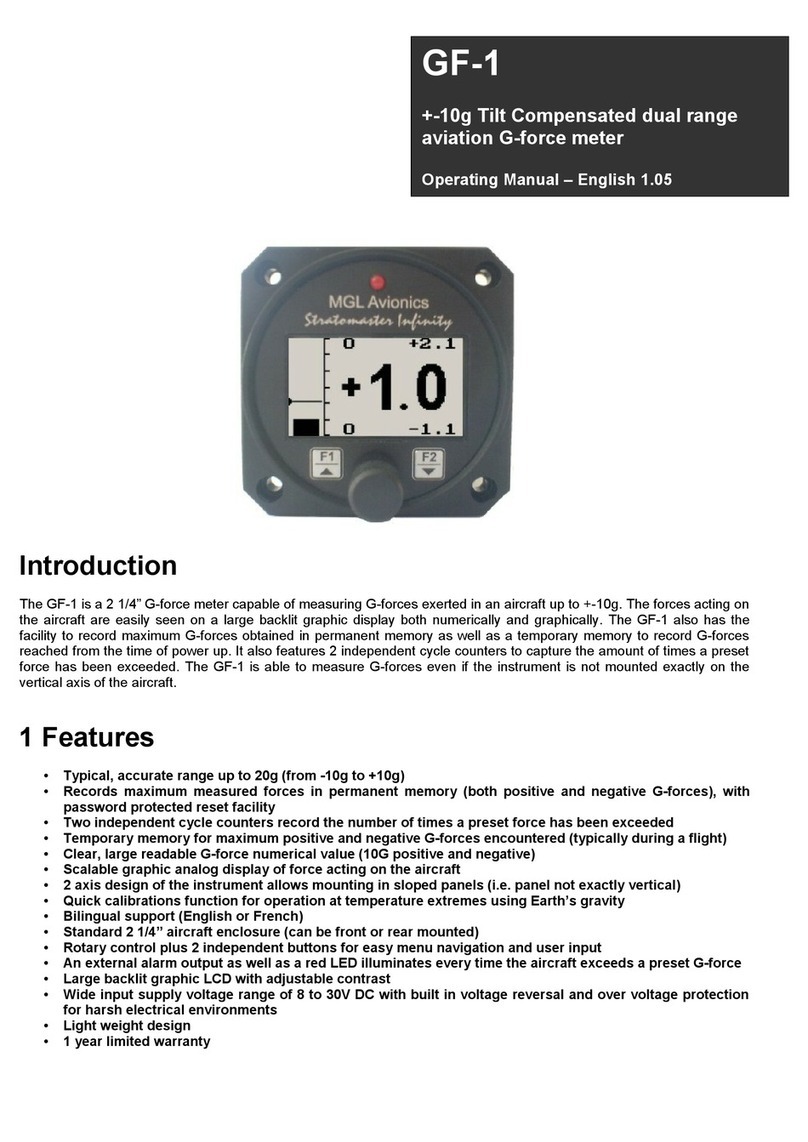
MGL Avionics
MGL Avionics GF-1 User manual
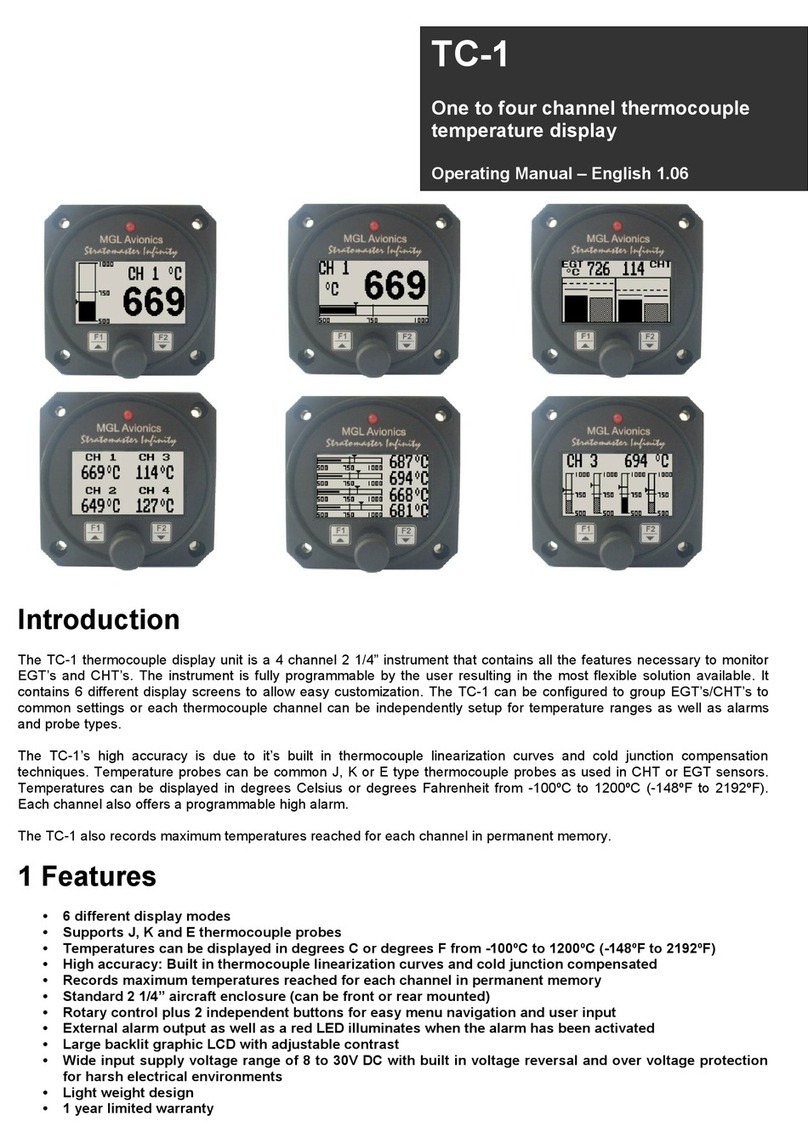
MGL Avionics
MGL Avionics TC-1 User manual
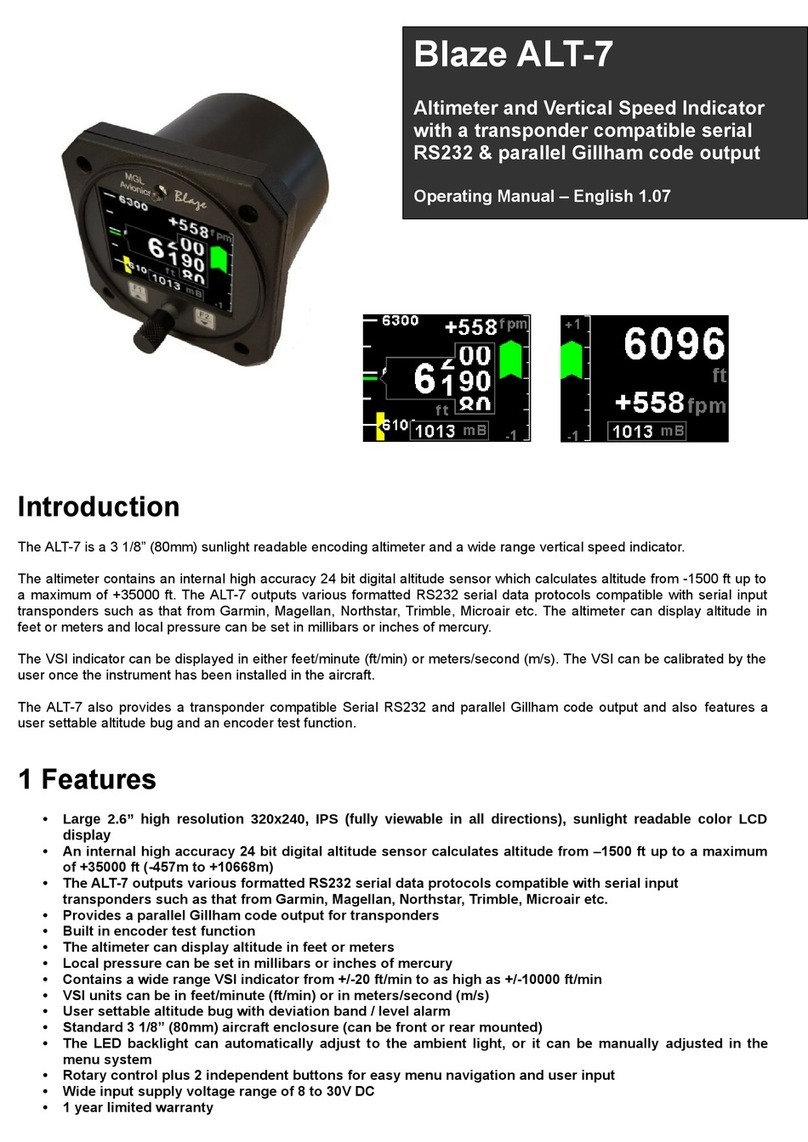
MGL Avionics
MGL Avionics Blaze ALT-7 User manual
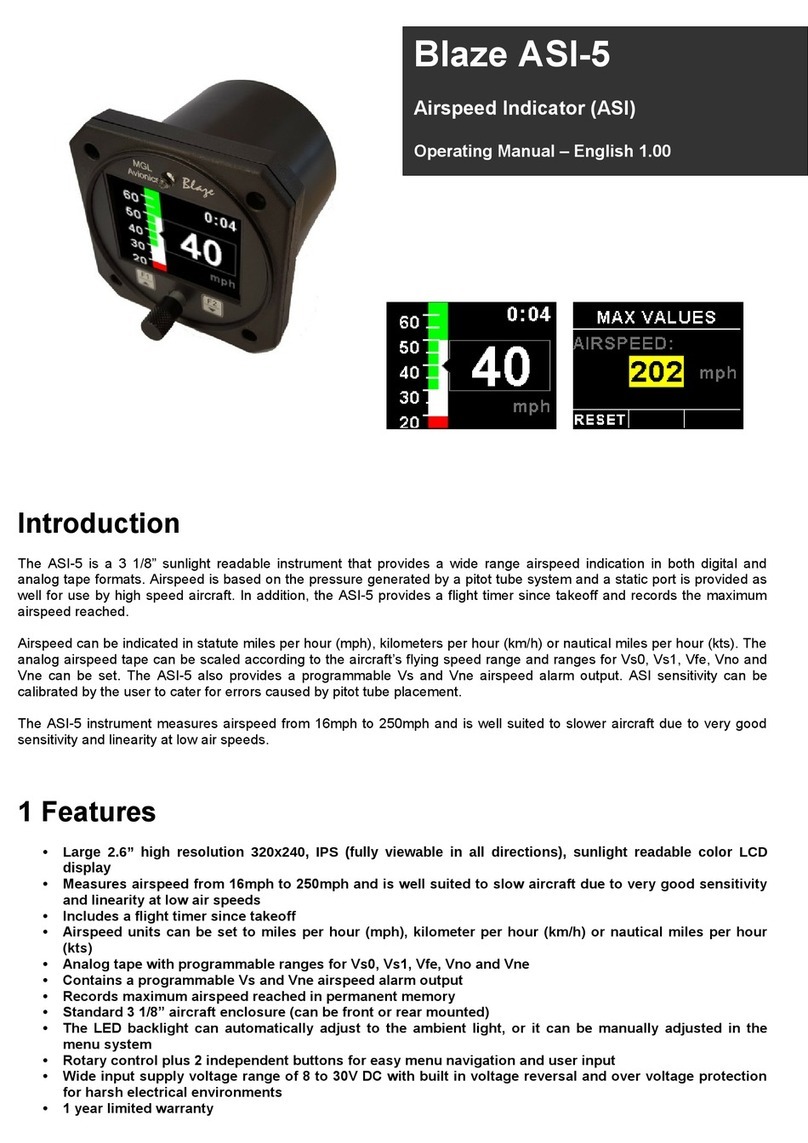
MGL Avionics
MGL Avionics Blaze ASI-5 User manual
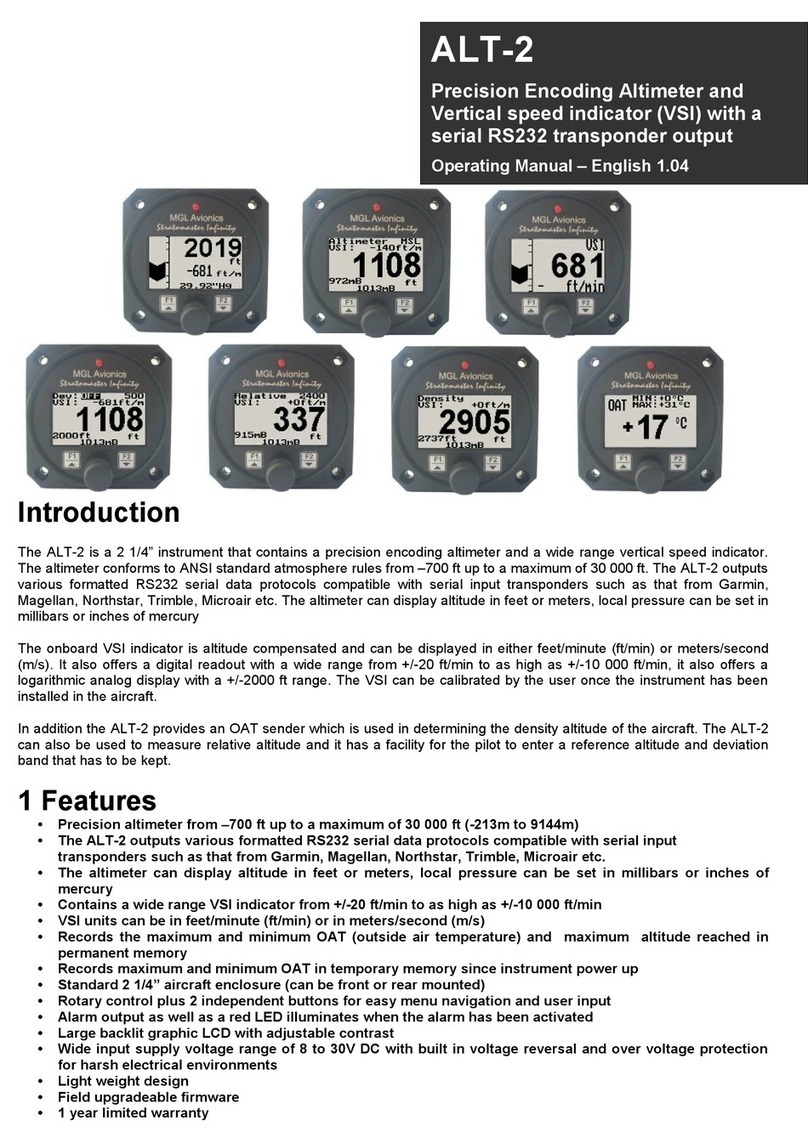
MGL Avionics
MGL Avionics ALT-2 User manual
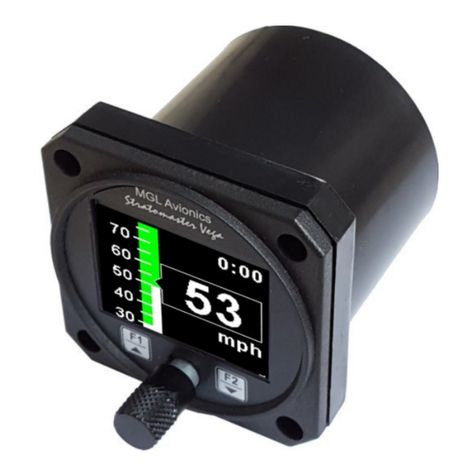
MGL Avionics
MGL Avionics Stratomaster Vega ASI-4 User manual
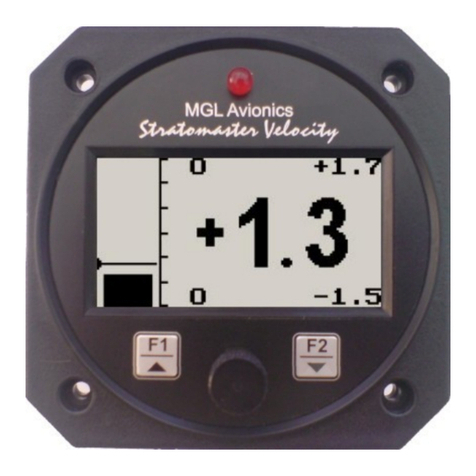
MGL Avionics
MGL Avionics GF-2 User manual
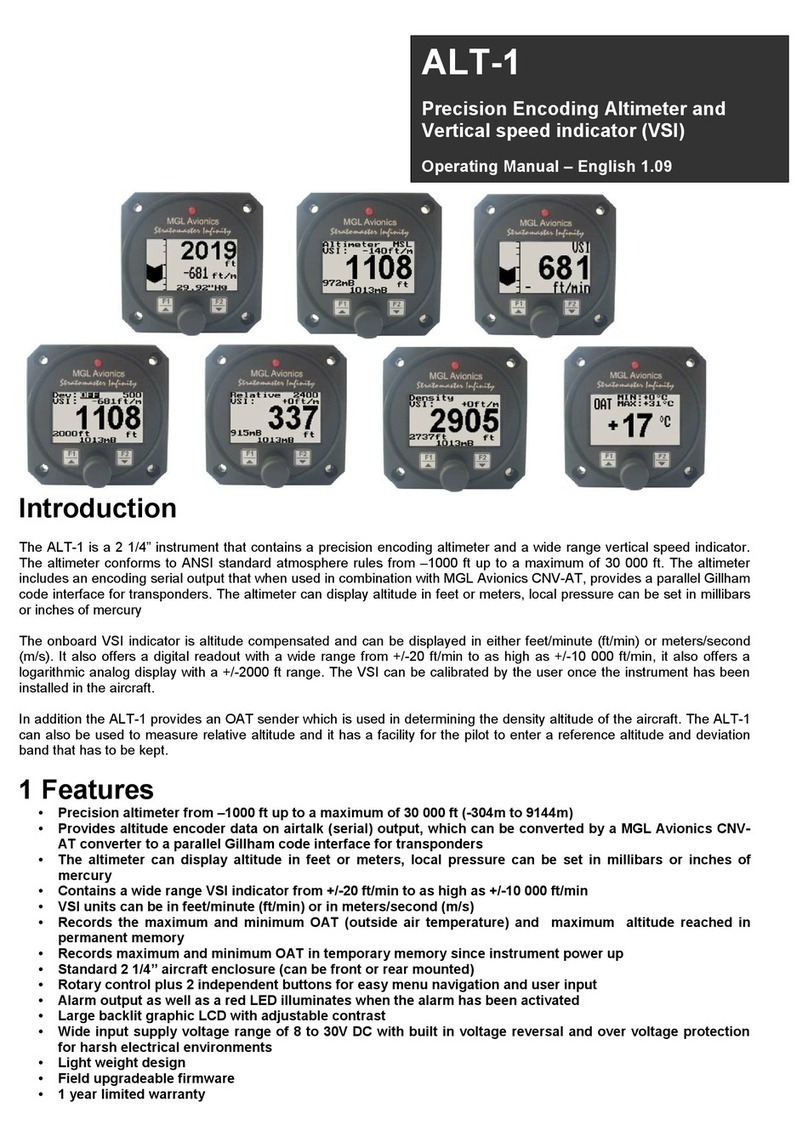
MGL Avionics
MGL Avionics ALT-1 User manual
